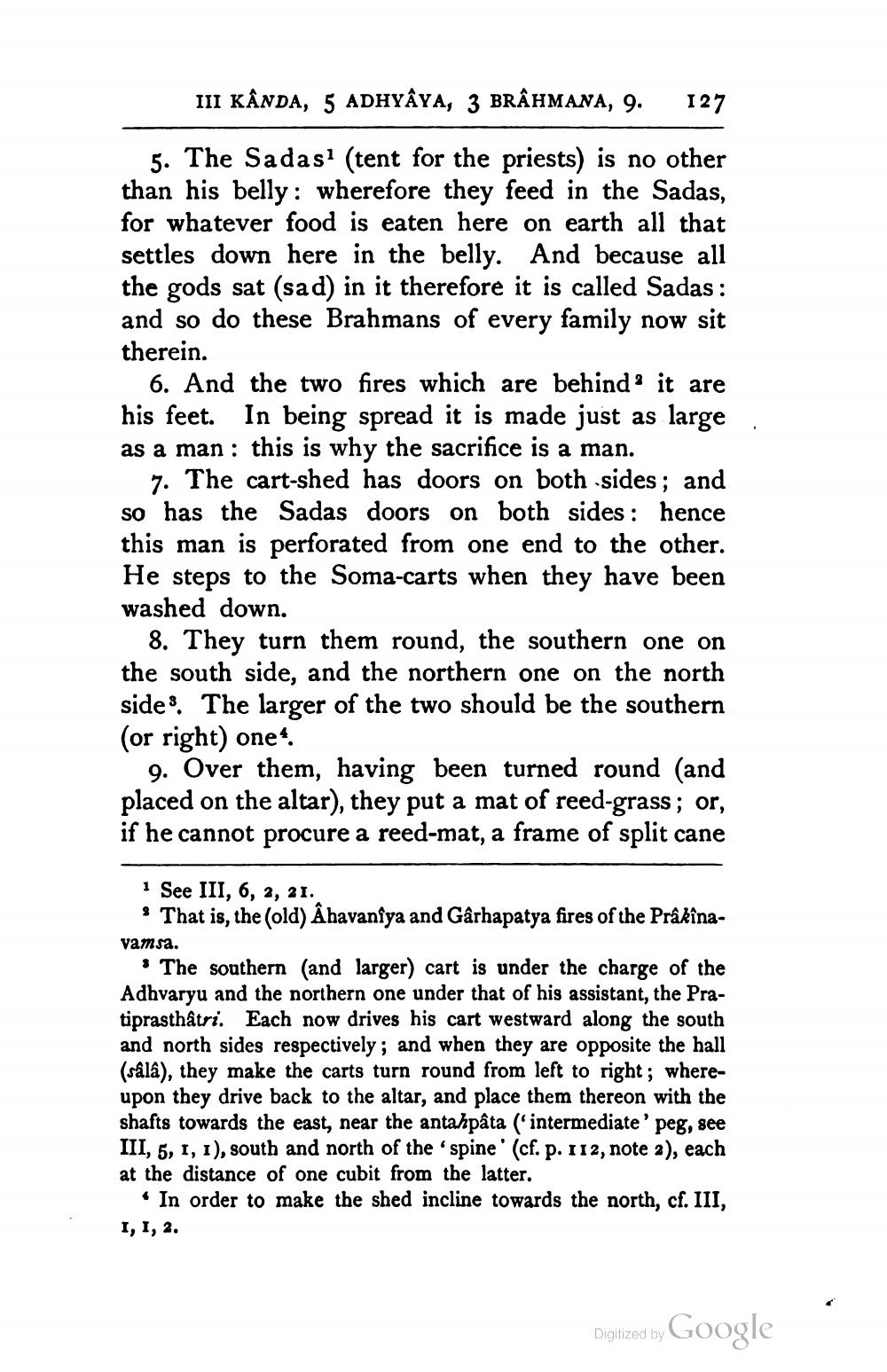________________
III KÂNDA, 5 ADHYAYA, 3 BRÂHMANA, 9.
127
5. The Sadas! (tent for the priests) is no other than his belly: wherefore they feed in the Sadas, for whatever food is eaten here on earth all that settles down here in the belly. And because all the gods sat (sad) in it therefore it is called Sadas: and so do these Brahmans of every family now sit therein.
6. And the two fires which are behind it are his feet. In being spread it is made just as large as a man : this is why the sacrifice is a man.
7. The cart-shed has doors on both sides; and so has the Sadas doors on both sides : hence this man is perforated from one end to the other. He steps to the Soma-carts when they have been washed down.
8. They turn them round, the southern one on the south side, and the northern one on the north sides. The larger of the two should be the southern (or right) one
9. Over them, having been turned round (and placed on the altar), they put a mat of reed-grass; or, if he cannot procure a reed-mat, a frame of split cane
1 See III, 6, 2, 21.
That is, the (old) Ahavaniya and Gárhapatya fires of the Prâkînavamsa.
• The southern (and larger) cart is under the charge of the Adhvaryu and the northern one under that of his assistant, the Pratiprasthầtri. Each now drives his cart westward along the south and north sides respectively; and when they are opposite the hall (sala), they make the carts turn round from left to right; whereupon they drive back to the altar, and place them thereon with the shafts towards the east, near the antahpâta ("intermediate' peg, see III, 5, 1, 1), south and north of the spine' (cf. p. 112, note 2), each at the distance of one cubit from the latter.
• In order to make the shed incline towards the north, cf. III, 1, 1, 2.
Digitized by Google




